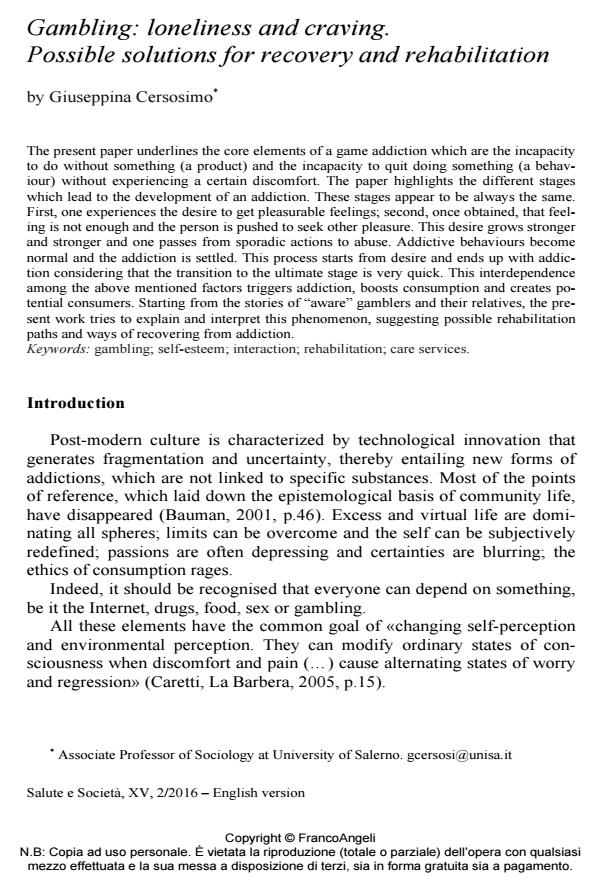Gambling: loneliness and craving. Possible solutions for recovery and rehabilitation
Journal title SALUTE E SOCIETÀ
Author/s Giuseppina Cersosimo
Publishing Year 2016 Issue 2016/suppl. 2
Language English Pages 15 P. 112-126 File size 99 KB
DOI 10.3280/SES2016-SU2009
DOI is like a bar code for intellectual property: to have more infomation
click here
Below, you can see the article first page
If you want to buy this article in PDF format, you can do it, following the instructions to buy download credits

FrancoAngeli is member of Publishers International Linking Association, Inc (PILA), a not-for-profit association which run the CrossRef service enabling links to and from online scholarly content.
The present paper underlines the core elements of a game addiction which are the incapacity to do without something (a product) and the incapacity to quit doing something (a behaviour) without experiencing a certain discomfort. The paper highlights the different stages which lead to the development of an addiction. These stages appear to be always the same. First, one experiences the desire to get pleasurable feelings; second, once obtained, that feeling is not enough and the person is pushed to seek other pleasure. This desire grows stronger and stronger and one passes from sporadic actions to abuse. Addictive behaviours become normal and the addiction is settled. This process starts from desire and ends up with addiction considering that the transition to the ultimate stage is very quick. This interdependence among the above mentioned factors triggers addiction, boosts consumption and creates potential consumers. Starting from the stories of "aware" gamblers and their relatives, the present work tries to explain and interpret this phenomenon, suggesting possible rehabilitation paths and ways of recovering from addiction.
Keywords: Gambling; self-esteem; interaction; rehabilitation; care services.
Giuseppina Cersosimo, Gambling: loneliness and craving. Possible solutions for recovery and rehabilitation in "SALUTE E SOCIETÀ" suppl. 2/2016, pp 112-126, DOI: 10.3280/SES2016-SU2009